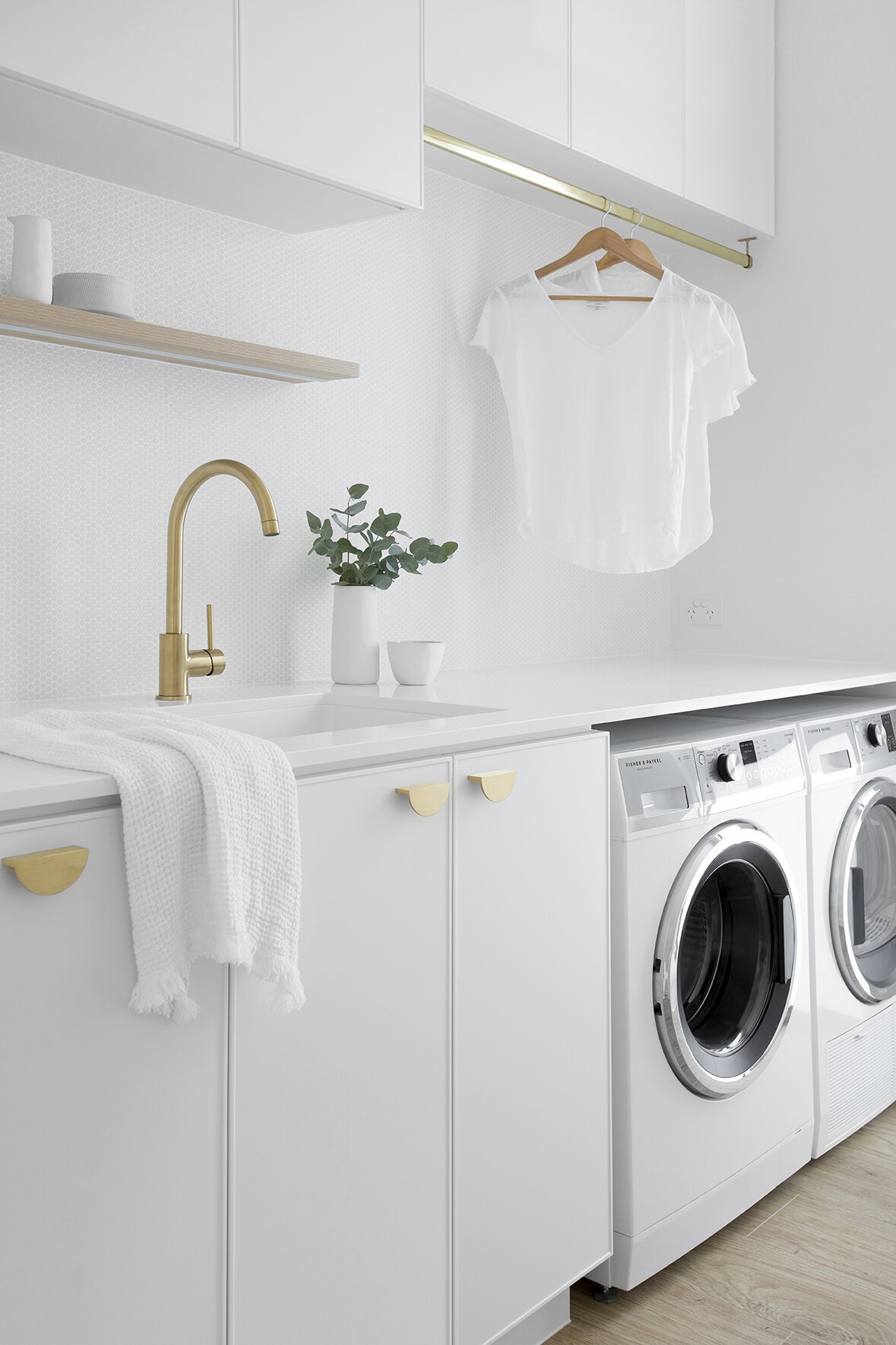The Truth About Epoxy Grout
By Zephyr and Stone
If you’ve fallen in love with a mosaic tile, but alarm bells are ringing at the thought of scrubbing all that grout, then listen up! There is an alternative to regular tile grout, that will see your cleaning time slashed, and your mosaic feature tiles sparkling like new in months and years from now.
Have we got your attention? Then let’s dive into all things epoxy grout…
Zephyr and Stone • Melbourne Luxe Kitchen Featuring Kit Kat Tiles with Epoxy Grout
Zephyr and Stone • Classic Coastal Laundry Featuring Small Mosaic Tiles With White Grout
Zephyr and Stone: Bathroom Design Bundle
So first things first… What is grout, and how is epoxy grout different?
Traditional tile grout is made from a cement-based mix. It’s not waterproof and actually absorbs water when it becomes wet. It also absorbs stains easily, as anyone who has scrubbed grout will attest to.
Epoxy grout, on the other hand, is made of epoxy resins combined with a filler powder. This makes it waterproof and almost completely resistant to stains. It also makes it more durable than regular regular grout, making it the ideal choice for splash backs, floors and high-traffic areas.
Zephyr and Stone • Finishes Schedule
Epoxy Grout Benefits
Epoxy grout is resistant to cracking, shrinking and discolouration, making it ideal for applying in wet areas, such as showers. It’s also highly resistant to the harsh chemicals found in cleaning products. Another added bonus of grout epoxy is that unlike traditional cement grout, epoxy grout does not need to be sealed due to its non-porous nature.
Sound too good to be true? Let’s look at the drawbacks of grouting with this wonder-grout.
Zephyr and Stone • Scandi Powder Room
Epoxy Grout Drawbacks
Epoxy grout is more difficult to apply than traditional tiling grout. It takes longer to apply and sets quickly, so must be applied in stages. Tiles must also be cleaned thoroughly before applying epoxy grout. You’ll also need to be extra careful with natural stone tiles and surfaces, as epoxy grouts can discolour porous surfaces.
Z+S Tip • When using epoxy grout on natural stone tiles or surfaces, thoroughly seal the stone tile or surface prior to grouting with the grout epoxy to avoid discolouration of the stone surface.
Zephyr and Stone: Bathroom Measurement Cheat Sheet
Epoxy Grout Looks Different To Cement-Based Grout
Epoxy can have a slightly plastic look to it, compared to the textured cement look of regular grout. Any epoxy residue left on tiles will have a glossy sheen to it, so must be cleaned thoroughly immediately after application. Due to its sheen, epoxy grout is also less forgiving and can highlight imperfections in your tiling and grouting.
Zephyr and Stone • Contemporary Coastal Butler’s Pantry
Epoxy Grout Cost
Epoxy grout also comes with a much higher price tag - expect to pay three to five times more than standard cement grout for your product. The extra time to apply epoxy and clean thoroughly afterwards also adds to the bottom line, making this grout a considerably larger investment.
Zephyr and Stone • Scandi Laundry
Z+S Interior Design Tip •
When choosing to use an epoxy grout, match your grout colour as closely as possible to your tile colour. This will make any imperfections in the tiling or grout less obvious. Also ensure your tiler is experienced in applying epoxy grout, as the steps involved differ significantly from traditional cement grouts.
Zephyr and Stone • Classic Coastal Butler’s Pantry With Small White Feature Mosaic Tiles To Splashback
So there you have it. Epoxy grout is essentially grout, without the scrubbing… and despite some of its drawbacks, it is a fabulous solution for splashbacks, wet areas and tiled floors that experience high levels of traffic.
We always opt for epoxy grout if installing a mosaic splashback behind a cooktop, or if installing a light coloured or white floor tile in a high-traffic area. If you’ve decided to use a regular cement-based grout for these areas, regular sealing of your grout and tiles can significantly help reduce grout staining and reduce tile cleaning too!
Zephyr and Stone: Finishes Schedule For Organising Your Renovation










